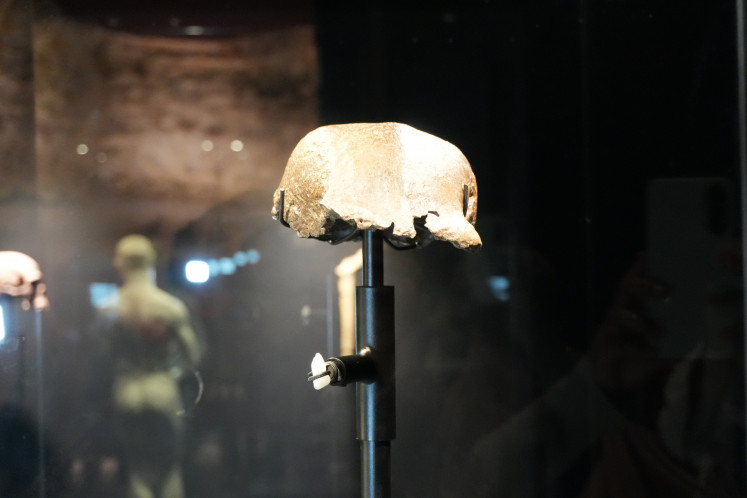Popular Reads
Top Results
Can't find what you're looking for?
View all search resultsPopular Reads
Top Results
Can't find what you're looking for?
View all search resultsBantul museum showcases modern take on 'wayang beber'
Wayang beber performance usually involves dalang (puppeteers), sinden (female vocalists for gamelan) and gamelan.
Change text size
Gift Premium Articles
to Anyone
A
group of children was playing in the courtyard hidden under shady trees in Kanutan hamlet, Bantul, Yogyakarta. They were joking around while coloring several items using acrylic paint.
Meanwhile, another group of children sat in a wooden gazebo, learning how to make wayang beber on canvas from Indra Setiawan, a founder of Wayang Beber Sekartaji Museum.
Indra was in the middle of finishing a wayang beber painting that illustrated Panji Kuda Semirang of the Panji tales, a history-based legend from the Kediri Kingdom era in 10th century.
Indra had finished painting Galuh Candra Kirana and Inu Kertapati’s love story on a canvas roll. This wayang beber artwork will be showcased at the Panji International Festival 2018, which slated to be held at the Sonobudoyo Museum, Yogyakarta. The exhibition is a part of the festival, which will take place in several cities, namely Malang, Kediri, Yogyakarta, Jakarta and Bali.
Similar to comic books, wayang beber tells a story using images. However, wayang beber performances usually involves dalang (puppeteers), sinden (female vocalists for gamelan) and gamelan.
The dalang will tell a story by unrolling the scroll, while sinden and gamelan accompany the performance.
Indra said a classic wayang beber performance was a rarity nowadays.
He added that some people saw such performances as a sacred event, creating a distance between the audiences and performers.
Read also: The metamorphosis of 'wayang beber'
Realizing this, Indra built Wayang Beber Sekartaji Museum, aiming to help wayang beber gain notice as a traditional art that can be enjoyed by many.
Indra recalled that wayang shows were the only entertainment available during his childhood. His interest on wayang beber rose upon meeting Hermin Istiariningsih, a wayang beber maestro.
Indra then plied his wayang beber making skills under the watchful eyes of Hermin. Since Indra previously worked at the Sono Budaya Museum, he took a giant step by opening Wayang Beber Sekartaji Museum.
The museum currently showcases 35 pieces of wayang beber. Some were made by Indra, while others were donated by Hermin and painters from Yogyakarta.
In addition to museum, Indra also opened an art space, welcoming children to play and learn arts.
Children living in Kanutan usually pay a visit to the museum every day after school. Here, they learn how to play gamelan or paint wayang beber.
Indra said these children were allowed to play and learn based on their interest, adding that he tried not to force them to learn about wayang’s rules and restrictions.
On several occasions, Indra had asked the children to create art performances in the museum’s courtyard. Instead of the classic Panji tales, Indra created contemporary performances, namely Ireng Putih Nuswantoro (The Archipelago’s Black and White) and Tresno Njamah Nuswantoro (Love Touches the Archipelago). These modern wayang beber’s stories tell the audiences about the beauty of harmony and unity in Indonesia. (jes/kes)











